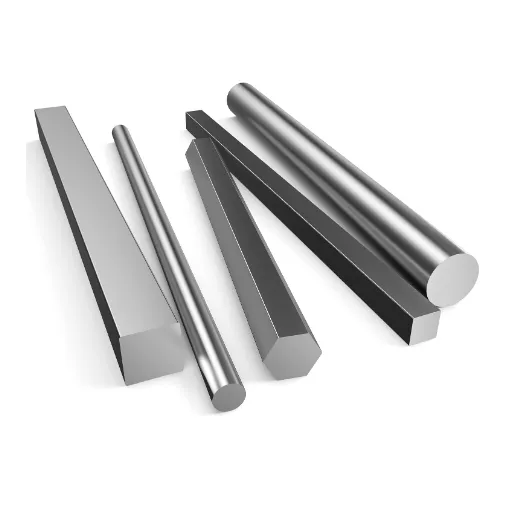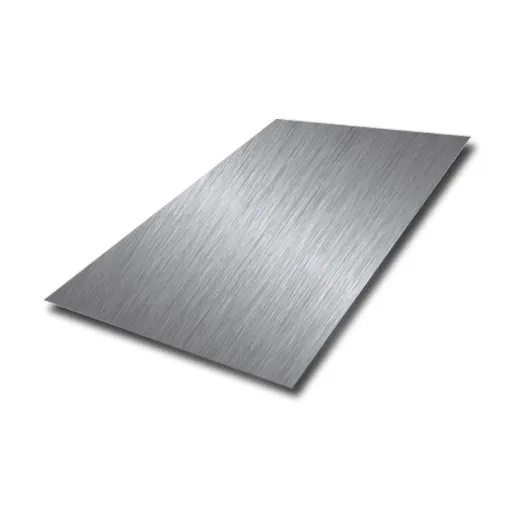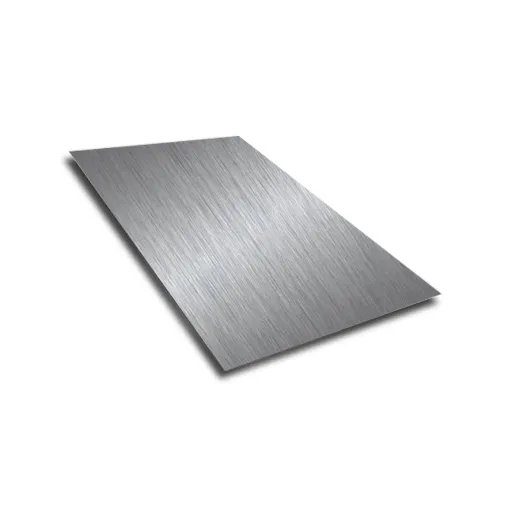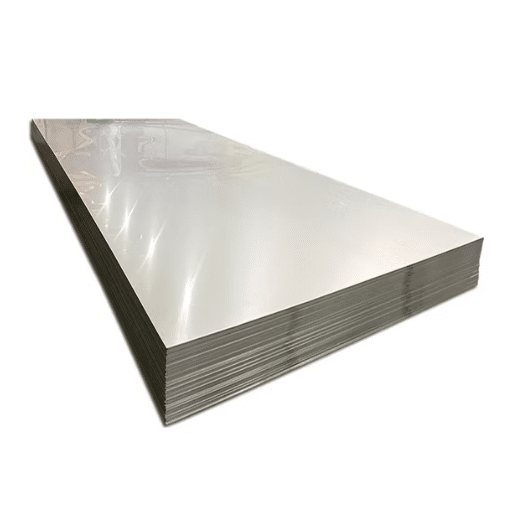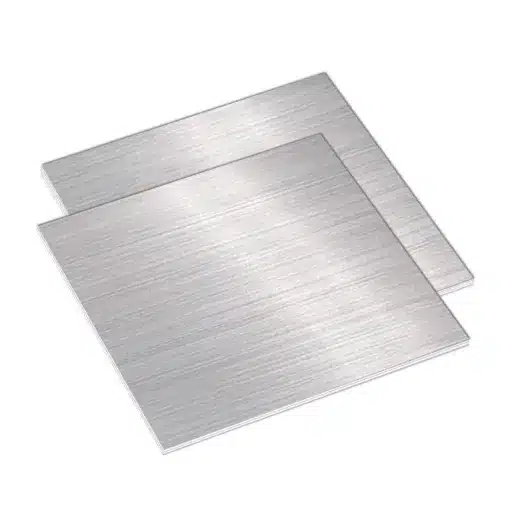Stainless steel flat bars are one of the essential components of various industries as they are strong, hard-wearing, and versatile. A vast range of stainless steel grades is available in the industry, with 304 and 316 being among the most popular grades, valued for various properties applicable to different applications. Be it a professional in construction or manufacturing or just interested in choosing the right material for a project, this knowledge can greatly affect the process of choosing between these two types of stainless steel. The guide takes a deeper dive into the nitty-gritty characteristics, pros, and applications of stainless steel flat bars of types 304 and 316, which shall help you make informed decisions to suit your needs.
Introduction to Stainless Steel Bars
What are Stainless Steel Bars?
Stainless steel bars are long, thick, and solid metal products made out of stainless steel; they are to be characterized by their high strength, great durability, and resistance to corrosion. Their superior properties make them perform especially well under difficult conditions; thus, they are used in various industries and applications, for instance, in the presence of moisture, chemicals, and high temperatures.
The bars can be shaped differently—flat, round, square, and hexagonal, in this way, they meet the needs of the manufacturing or construction sector in a different way. The flat bar is often used in the construction of buildings and bridges and other structures of that kind because its shape is very flexible and it is easy to work with. Outdoor and marine environments, as well as other places where long-term durability is required, are some of the areas where these bars can be put to use because of their resistance to corrosion.
There are also classifications for stainless steel bars based on the grade of stainless steel that is used. The widely used grades of 304 and 316 differ in their chemical makeup as well as in their performance, with 316 providing even more corrosion resistance due to the addition of molybdenum. The right type of stainless steel bar is determined by considering the specific environment, the strength requirements, and the intended application; this way, one gets not only the best performance but also the longest lifespan.
Types of Stainless Steel: 304 and 316
Among the many different grades of stainless steel, stainless steel 304 and 316 are the most commonly used. They also have their specific properties that meet the requirements of different production. Stainless steel 304 is very popular because of its high resistance to corrosion, durability, and low cost, which are some of the major factors responsible for its widespread usage. It is mainly used in kitchen appliances, interior architecture, and other places where the humidity is high but not extreme and moisture presence is there.
On the flip side, stainless steel 316 has a corrosion resistance that is superior to 304 stainless steel. This is due to the fact that it has a higher nickel content and addition of molybdenum. That’s why it is best for use under harsh conditions such as marine and chemical applications and industrial areas where saltwater, chemicals, or high pressure are the norms. Although 316 is normally pricier, its remarkable ability to survive tough situations makes it worth the cost for critical applications.
When making a decision between 304 and 316, factors like exposure to environment, cost limits, and functional needs must be carefully analyzed. In the case of environments where there are high chances of chloride or chemical exposure, 316 is the one chosen for its guaranteed anti-corrosion property. Conversely, for less strict usages, 304 is the ideal choice because of its excellent properties and cost-effectiveness.
Applications of Stainless Steel Bars
Stainless steel bars are versatile materials with a wide range of applications in the industry due to their durability, resistance to corrosion, and high strength. Below is a detailed list of five main uses of stainless steel bars:
1. Construction and Infrastructure
Reinforcement of concrete structures, building frameworks, and bridge components are among the most common applications where stainless steel bars are used in construction. The resistance of these materials to harsh environmental conditions not only ensures the longevity but also the safety of these structures. For instance, stainless steel rebar is used in areas near the coast where the salt from the sea can cause corrosion of steel bars.
2. Automotive Industry
Stainless steel bars are in the automotive industry for the production of important parts like exhaust systems, engine units, and structural supports. The material’s light weight combined with its strength makes it suitable for modern fuel-efficient cars.
3. Medical and Pharmaceutical Equipment
Surgical instruments, orthopedic implants, and hospital furniture are among the medical equipment that rely on stainless steel bars for their manufacturing. The bars’ non-reactive property and easy sterilization make them a must-have in clean environments.
4. Food and Beverage Industry
Stainless steel bars are an essential part of food processing machines, kitchen tools, and storage tanks as they guarantee cleanliness and prevent contamination. The material’s capacity to withstand high temperatures and corrosion from food acids makes it a dependable option.
5. Marine Applications
Saltwater and harsh conditions are no match for the stainless steel bars, which is why they are so widely used in marine applications like shipbuilding, offshore platforms, and dock structures. Among the different grades, 316 stainless steel is the most popular for these applications because of its highest resistance to corrosion.
All these applications underscore the extraordinary adaptability and worthiness of stainless steel bars in various industries.
Properties of 304 and 316 Stainless Steel
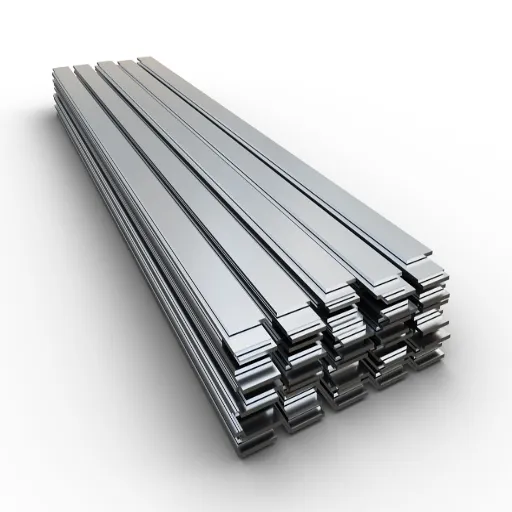
Corrosion Resistance of 304 and 316 Stainless Steel
Both 304 and 316 stainless steel grades are renowned for their remarkable resistance to corrosion. However, the extent of their performance varies a bit based on the specific environmental factors at play. 304 grade, composed of 18% chromium and 8% nickel, is very much resistant to oxidation and most corrosive agents, including acids, bases, and the atmosphere. People still tend to use it in waters with or near chloride especially in places close to the sea where there’s deicing salts, because it is not very resistant to pitting and crevice corrosion caused by the chloride ions.
On the contrary, 316 stainless steel elevates the standard of its predecessor 304 by adding molybdenum of 2% to 3%, which quadruples its resistance to chloride-induced corrosion. Thus, it is the preferred option in extremely harsh environments such as coastal areas, chemical processing, and places where constant exposure to saltwater or aggressive chemicals occurs. It has been deduced through studies that within chlorine-rich environments 316 stainless steel is the winner against 304 because it is less prone to developing localized corrosion, which eventually leads to the deterioration of the material’s structural integrity in the long run.
Regardless of their differences in performance, both grades still have excellent durability and longevity in different conditions. The selection of either 304 or 316 usually comes down to the criterion of application and exposure risks. It is a common recommendation to invest in 316 stainless steel for higher risk corrosion environments due to its excellent properties.
Tensile Strength and Durability
Considering tensile strength and durability, both 304 and 316 stainless steel are characterized by superior mechanical properties that allow their use in applications with high demands. The tensile strength of 304 stainless steel is around 70,000 psi, whereas 316 stainless steel is about equal but usually a little higher than that value owing to its greater content of molybdenum. Besides providing resistance against corrosion, this additional molybdenum also enhances the overall strength of the metal and resistance to deformation under load slightly.
The durability of these materials is another point of contention, as the two grades of stainless steel can last a long time under significant stress and exposure conditions without losing their properties. Nonetheless, in areas with high salinity, heavy pollutants, or extreme temperatures, 316 stainless steel is likely to maintain its structural integrity for a longer period than 304 which in turn makes it a preferred choice of the marine, chemical processing, and aerospace industries.
Both alloys, though, are very adaptable and found in a variety of applications where their longevity and reliability are indispensable; however, environmental factor monitoring can still help to decide which grade gives better value and performance in a particular use.
Comparison of 304 and 316 Stainless Steel Properties
Cost-effective, versatile, and corrosion-resistant 304 stainless steel is perfect for general use while 316 stainless steel, due to molybdenum addition, gets the very superior corrosion resistance and is appropriate even in the very harshest environments.
| Aspect | 304 | 316 |
|---|---|---|
| Resistance | Good | Excellent |
| Expense | Lower | Higher |
| Tensile | Moderate | High |
| Additives | None | 2-3% Molybdenum |
| Usage | General | Marine, Chemical |
| Joining | High | Good |
| Shaping | Very Good | Good |
| Thermal | Up to 870°C | Up to 927°C |
| Magnetism | No | No |
| Longevity | High | Superior |
Stainless Steel Flat Bars: Specifications and Uses
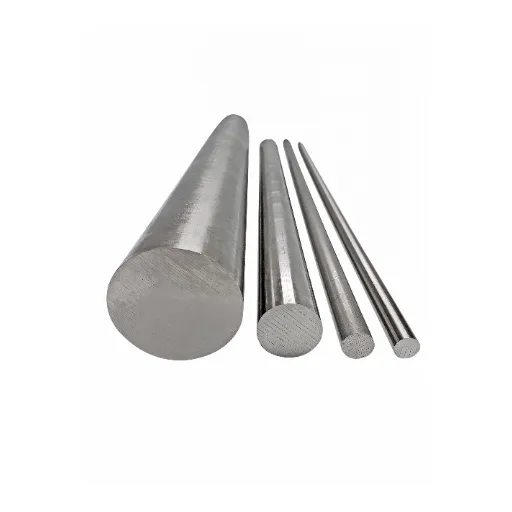
Dimensions: Diameter, Thickness, and Length
Different sizes of stainless steel flat bars are produced for industrial and commercial applications. The diameter is the thickness of the passage across the circular section of the bar and it is vital for the applications where rotation needs to be smooth, like machine parts. Usually thicknesses around 3mm to 12mm are the most common, but thicknesses can be made to order according to project specifications. Stainless steel flat bars lengths typically range from 3m to 6m, but custom lengths are also available depending on the producer.
The selection of dimensions is determined by the application. For example, thinner bars are often used in decorative or light structures, whereas thicker ones are applicable for heavy-duty frameworks, marine projects, or other construction areas needing durability. The varying thickness and lengths tolerances make stainless steel flat bars to be highly adaptable and single precision engineering.
It is worth mentioning that the tolerance for diameter, thickness, and length are the same as features of the material and accordingly the international standards like ASTM or ISO should be recognized. Manufacturers sometimes supply these tolerances on a data sheet to show the material is suitable for very precise applications. This focus on dimensional accuracy gives the required durability and functioning of the stainless steel flat bars in critical projects whether they are for aesthetic or industrial uses through machinery.
Finish Options for Stainless Steel Flat Bars
Flat bars made of stainless steel come with a range of finish options which can suit the application requirements of different industries. Among the finish options the mill finish which has a natural surface from production and, thus, is mostly used in non-decorative applications of low priority and visual appearance is one of the most common ones. Polished finishes are contrary to that, e.g., #4 brushed or #8 mirror, are the processes that make the stainless steel more attractive visually and, hence, their use in architectural design, residential projects, and decorative applications is very high. The polished finishes do not only add to the visual appearance but also increase resistance to corrosion and wear on the contrary.
The industries that require both durability and a sleek visual aesthetic might benefit from satin or bead-blasted finishes. Bead blasting is when fine glass beads are shot onto the surface of the stainless steel, producing a smooth, uniform texture that minimizes glare while giving a contemporary look. A satin finish also provides a subtle, matte appearance which is achieved through controlled mechanical abrasion. Their blend of practicality and modern style makes them frequently found in public infrastructure, professional kitchens, and product design.
Specialized finishes like etched or patterned stainless steel are on the rise as custom applications. The finishes allow one-of-a-kind, ornamental designs to be carved into the flat bars, making them suitable for upscale architectural applications or artistic installations. Furthermore, certain industries insist on electropolished finishes, which result in a micro-smooth and shinny surface achieved by impurity removal through electrochemical polishing. This process is highly valued in the pharmaceutical, food processing, and medical fields where sanitary and contamination-free surfaces are indispensable. In arguably the widest spectrums of finishing options, stainless steel flat bars grant versatility that meets the functional and aesthetic needs of various sectors.
Common Applications for Stainless Steel Flat Bars
The corrosion resistance, durability, and versatility of stainless steel flat bars make them essential materials for many industries. One of the most noted uses of flat bars is in construction, where they serve as supports for the entire structural system, strengthening the building and enhancing its beauty to fit the architectural design. Such a strength and ability to resist environmental conditions make big structures like outdoor buildings, bridges, and facades to be among the upcountry ones for stainless steel flat bars.
Moreover, there are manufacturing and industrial uses for stainless steel flat bars. They can be seen in conveyor belts, parts of machines, and even in hardware applications where the performance is expected to be accurate and dependable. The same can be said about the food processing and pharmacy industries, which also believe and use these flat bars for making frames, containers, and other equipment that abide by sanitary and safety regulations.
The transportation industry that covers automotive and shipbuilding is also a great beneficiary of stainless steel flat bars, thanks to the strong and light characteristics of the steel. Thus, the bars are employed in the production of chassis, railings, and body panels where durability and resistance to wear are the two most important factors. The energy sector, on the other hand, is looking to the bars for solar panels, wind turbines, and oil and gas infrastructure, and the reason is their capability to survive under extreme conditions.
Stainless steel flat bars are, however, not only found in functional applications but also in the aesthetic ones, such as furniture, appliances, and decorative elements. The combination of strength, versatility, and modern appearance has made them the basic material in the manufacture of items used in different applications around the world.
Fabrication and Welding of Stainless Steel Bars
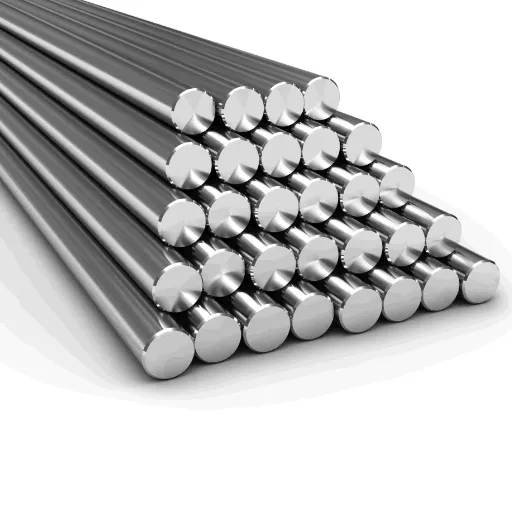
Techniques for Welding Stainless Steel Bars
Welding of stainless steel bars is an art that necessitates good preparation and proper techniques throughout the whole process. It is only then that one can count strong and durable welds without impairing the integrity of the materials involved. First of all, the right stainless steel grade has to be chosen, since different grades, e.g. 304, 316, or 2205, might not only vary in price but also in procedure because of their different chemical compositions and physical properties. The next and really important step is cleaning the surfaces properly so that no contaminants remain. This means that all grease, oil, or oxide layers have to be removed completely otherwise defects or corrosion at the site of welding could happen.
One of the most popular techniques is the Tungsten Inert Gas (TIG) welding which allows for very precise control and is very well suited to thin stainless steel bars. The Metal Inert Gas (MIG) welding is another common method that is good for thicker materials because it has higher rate of deposition and thus faster welding. Also, the correct filler metal must be selected which will not only match the base material chemically but also provide good quality weld.
One of the key aspects in the entire welding process is proper heat management which will prevent warping or producing heat-affected zones that can subsequently lead to cracking. Some measures to be taken are vigorous controlling of the heat input and lengthy allowed cooling. In addition, post-weld treatment like pickling, passivation, or mechanical polishing will actually contribute to the stainless steel’s corrosion resistance restoration along with the enhancement of the weld’s durability. Thus, by means of sophisticated welding techniques combined with accurate preparation and quality control, stainless steel bars can be manufactured for a range of industrial applications from construction to manufacturing.
Considerations for Fabrication Processes
In the manufacturing of stainless steel bars, it is very important to choose the right material according to its properties and planned application. Choosing the right grade of stainless steel is very important since different grades behave differently with respect to temperature, stress and climate. For example, among stainless steels categorized into groups, austenitic ones can possess very good resistance to corrosion but may need special care during thermal treatment to avoid developing distortions or losing their mechanical strength.
Another point to mention is Precise cutting, forming, and machining as a major factor. Any tool or machine that is used must be specially made to reduce the chances of contamination and at the same time prevent the material from the harm of surface scratches or the introduction of impurities which can weaken the whole material. Controlling the heat that is applied while welding, and also the cooling afterwards being uniform ensures the strength of the material and its accurate size.
Finally, the post-processing steps such as the passivation and electropolishing are very important to improve the surface quality and to replace the protective oxide layer that prevents rusting which is done through the oxidation process. Taking advantage of the knowledge of the materials, using accurate methods, and implementing high standards of inspection, the fabrication process can lead to getting the best results possible that conform to stringent industry standards.
Machining and Working with Stainless Steel
Stainless steel machining is tough due to its high strength, durability, and the property of work-hardening, which are difficult-to-handle properties. Thus, the different aspects like the choice of tools, cutting methods, and cooling practices etc., need to be thought out and planned properly in advance to be able to process this material. Carbide or high-speed steel cutting tools that are coated with advanced wear-resistant materials are the ones that not only can cut the material but also maintain the cutting efficiency for a longer time. Slow cutter speeds in combination with high feed rates not only help in tool life but are also effective in preventing the workpiece from getting deformed due to overheating, which otherwise would happen during high-speed cutting or if the tool were to get worn out quickly.
Furthermore, lubrication and cooling are indispensable when it comes to the successful and smooth machining processes. The best performance cutting fluids are those that act as both friction reducers and heat dissipators; thus, they not only de-risk thermal expansion but also maintain the quality of the surface. In addition, the effective method of coolant application facilitates the evacuation of chips, thus the built-up edge is less likely to occur and precision is enhanced.
Another factor that makes stainless steel a difficult material to work with is its work-hardening tendency that can happen when the tools stay too long on the cutting surface. Sharpened tools and narrow cutting depth can be helpful in preventing this problem and thus ensuring uniform results. Correctly done preparation, plus the use of the latest tooling and machining, are all part of the process that results in high-precision finishes and the durability of tool and equipment used in stainless steel fabrication.
Environmental Impact and Sustainability
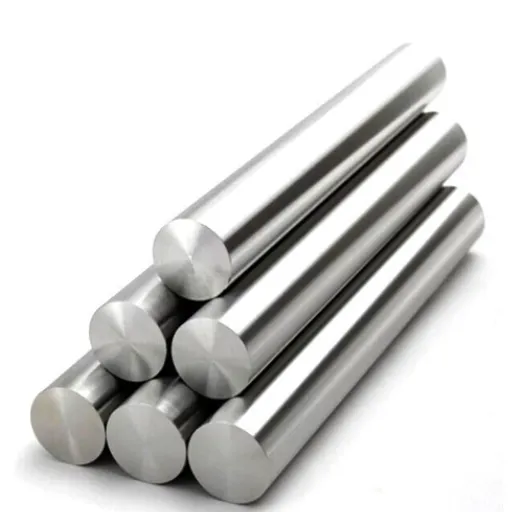
Recyclability of Stainless Steel Bars
Stainless steel is among the top materials that can be recycled to the maximum extent possible, thus, it is a very eco-friendly choice for several industries. The closed-loop lifestyle of the material is underlined by the fact that around 80-90% of recycled materials go into the manufacture of stainless steel products, which is a huge percentage of the total stainless steel produced. This high-rate of recycling not only ensures that stainless steel can be reused forever but also that the properties of the metal are not compromised, thus, at the same time lowering the need of virgin materials such as chromium, iron, and nickel. The recycling process also requires very little energy compared to the production of stainless steel from primary resources, which in turn lowers the carbon footprint and environmental impact.
The process of recycling starts with the collection of scrap stainless steel from all sorts of places like manufacturing industries, construction sites, and even products at the end of their life. Then, this scrap is sorted, cleaned, and transferred to electric arc furnaces where it is melted down and the impurities removed to get the composition of the stainless steel that corresponds to industry standards. The sustainability benefits of this process are enormous; the use of recycled stainless steel cuts down the energy consumption by roughly 70% when compared to the production of new steel and also shrinks the wastage related to extraction and mining considerably.
In addition, it is the toughness and resistance to corrosion of stainless steel that gives it a long life which leads to less frequent replacement of products made from stainless steel. Thus, the very long life of stainless steel coupled with its total recyclability makes it an ideal material for industries that are eco-conscious and want to minimize their impact on the environment. The adoption of stainless steel across the board from construction and automotive applications to medical devices and energy equipment signifies its role as a principal contributor to environmentally friendly manufacturing and development practices worldwide.
Lower Carbon Footprint of Stainless Steel Manufacturing
To this effect, it is necessary to innovate to do the whole process of stainless steel manufacturing with petite carbon footprint. I have no doubt that by employing new practices and technologies of various kinds, carbon emissions could be cut down significantly. For example, the introduction of cutting-edge machines and tools in the making of the finished product will help a lot in the elimination of gases that are harmful to the atmosphere. Electric arc furnace (EAF) production, for instance, which utilizes recycled materials and requires less energy as compared to conventional processes, is already one step closer to the green production of steel.
In addition, I see it as essential to the production of the alloy moving forward that the steel scrap is used more in the stainless steel recycling loop. The incorporation of scrap steel to a larger extent doesn’t merely take away the demand for new raw materials but also cuts down on the energy that would have been otherwise consumed for extraction and processing. This is the kind of circularity that underpins a sustainable economy, and it has already been proven very effective in mitigating environmental hazards in various industries.
Finally, it can also be said that the partnership and the investment in renewable sources of energy can help to a large extent in bringing down the carbon footprint associated with the manufacture of stainless steel. When a firm goes ahead and switches its factories from relying on non-renewable energy sources to using wind, solar, or other green alternatives, it will not only be directly involved in the process of emissions reduction to the tune of quite a lot. I maintain that through technology, resource management, and renewable energy, stainless steel manufacturing can be turned into an even greener industry, which would be a win-win situation for both the planet and the economy alike.
Best Practices for Sustainable Usage
The sustainability of stainless steel can be maximized if proper practices are followed during its lifetime. One of the most efficient methods is to give priority to durability by selecting stainless steel products that are very durable, thus minimizing the need for replacements. Maintenance is also an important factor; cleaning and storing properly at regular intervals will prolong the life of stainless steel products, and maintain their functional and aesthetic aspects.
Recycling is another consideration of major importance. The recycling rate of stainless steel is 100%, therefore, it is better to send the end-of-life products to the recycling plant rather than the landfill. This not only saves resources but also lessens energy usage and environmental effects during the manufacturing of new stainless steel. Besides, the producers and the buyers must work together to back the firms that would-be factories adopting certified standards for eco-friendly and fair production practices, as these practices yield better results for the planet and the community.
The last point is that the creative application of stainless steel can be in renewable energy structures like windmills and solar panel frames. This will lead to the stainless steel being viewed as a contributor to the green energy revolution. Therefore, these steps, along with a waste reduction focus and the application of circular economy concepts, guarantee that stainless steel stays extremely eco-friendly in all its different uses.
References
- •
Elevated Temperature Material Properties of Stainless Steel Reinforcing Bar
This study examines the material properties of stainless steel reinforcing bars at elevated temperatures, comparing them to carbon steel and highlighting their advantages in specific applications. - •
Stainless Steel Reinforcing Bars in Concrete
This report discusses the use of stainless steel reinforcing bars in concrete, focusing on their cost-effectiveness, durability, and long service life compared to traditional materials. - •
Basic Mechanical Properties of Duplex Stainless Steel Bars and Experimental Study of Bonding Between Duplex Stainless Steel Bars and Concrete
This paper explores the mechanical properties of duplex stainless steel bars and their bonding behavior with concrete, providing valuable insights into their structural applications. - •
Click here to read more.
Frequently Asked Questions (FAQ)
Q: What is bar stainless steel?
A: Bar stainless steel is basically a kind of stainless steel that comes in bar shape and is very popular in many applications because of its high resistance to corrosion and good mechanical properties. Almost all the time, the grades of 304 and 316 stainless steel are used, which, however, differ in resistance to corrosion and strength.
Q: What are the standard specifications for stainless steel bars?
A: The standard specifications for stainless steel bars are usually described in detail by a number of ASTM standards, where ASTM A276 is the most notable one for stainless steel bars and shapes setting the requirements for different grades, including 304 and 316. These specifications guarantee that the bars possess the required mechanical and corrosion resistance properties.
Q: What is the significance of using type 316 stainless steel?
A: The very same type of 316 stainless steel is pointed out to be of high corrosion-resistant materials because of the high amount of chromium and nickel that the alloying elements contain especially in the marine environments. It does not rust as easily as 304 steel and hence is an ideal material for places where the application needs are long lasting and durable.
Q: What are the typical applications for stainless steel flat bars?
A: Stainless steel flat bars are common in different fields of application, like giving structural support, doing metal fabrication, and manufacturing industries. Their versatility in functionality makes them applicable to different industries like construction, automotive, and food processing.
Q: How does the thickness of a stainless steel bar affect its properties?
A: The thickness of a stainless steel bar plays a big role in determining its tensile strength and general durability. Thicker bars are usually stronger and have better resistance against bending or warping thus making them fit for heavy-duty applications.
Q: What are the differences between 304 and 316 stainless steel?
A: The most significant difference separating 304 from 316 stainless steel can be indicated through their chemical composition. Molybdenum is present in the composition of 316, granting the steel greater resistance to pitting corrosion, especially in chloride environment. On the other hand, 304 being less expensive is more suitable for less corrosive environments.
Q: How can bar stainless steel endure harsh environments?
A: Bar stainless steel above all types, especially grades such as 304 and 316 are prepared to withstand severe environments and this is done through the excellent corrosion resistance of the material. The higher chromium content along with other alloying elements works together to prevent rust and degradation thus giving the material a longer life even in critical conditions.
Q: What factors should be considered when selecting stainless steel bars for a project?
A: Crucial factors to think about include the type of stainless steel (304 vs. 316), bar size (length, thickness, and diameter), needed corrosion resistance, and the application requirements in detail. Also, awareness of chemistry and the associated mechanical properties will most probably lead to the right choice being made for the longevity of the product as well as its efficient performance.
Conclusion
This comprehensive guide has explored the essential characteristics, applications, and considerations for 304 and 316 stainless steel flat bars. Understanding the differences between these grades, their unique properties, and their various applications will help you make informed decisions for your specific project needs, ensuring optimal performance, durability, and cost-effectiveness.

